Mahabalipuram Caves
Mamallapuram Caves
Useful Information


| Location: |
Mahabalipuram, Tamil Nadu 603104.
58 km From Chennai. (12.6141797, 80.1912288) |
| Open: |
All year daily 9-18. [2025] |
| Fee: |
Free. [2025] |
| Classification: |
 Cave Church Cave Church
 Monolithic Church Monolithic Church
|
| Light: | n/a, bring torch |
| Dimension: | |
| Guided tours: | self guided |
| Photography: | allowed |
| Accessibility: | no |
| Bibliography: | |
| Address: | Mahabalipuram Caves, Mahabalipuram, Tamil Nadu 603104, Tel: +91-1800-4253-1111. |
| As far as we know this information was accurate when it was published (see years in brackets), but may have changed since then. Please check rates and details directly with the companies in question if you need more recent info. |
|
History
| 7th and 8th centuries | excavated. |
| 1984 | inscribed on the UNESCO World Heritage List. |
Description
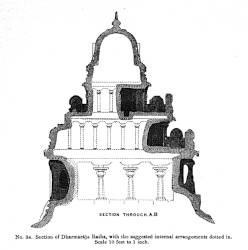
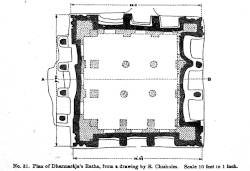
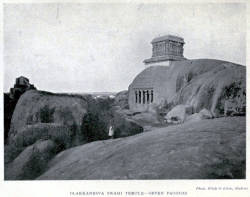
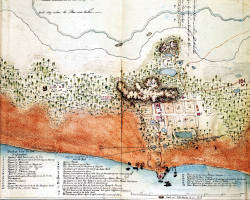

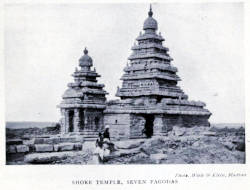

Mahabalipuram has a group of monuments, founded by the Pallava kings, carved out of rock in the 7th and 8th centuries. Mahabalipuram was previously known as Mammallapuram. The Pallavas, Patrons of Tamil culture made it their second capital. Mahabalipuram is unique in India as it has everything that makes a memorable visit; tradition, history, and piety.
Mahabalipuram art is divided into four categories: open air bas relief, structured temples, man-made caves and Rathas (chariots carved from single boulders, to resemble temples or chariots used in temple processions). The whole complex consists of 10 cave temples (man-made), 9 monolithic chariots-all in the name of 5 Pandavas, 4 Bas - relief sculpture panels on the rock walls, and the Shore Temple.
The Mahishashuramardini Cave consists of 10 cave temples, of which the most beautiful is the Mahishashuramardini Cave, which has fine bas-reliefs on its panels of enduring beauty. On one side there is Lord Vishnu in a sleeping posture which radiates peace, power, and wisdom. It is a masterpiece of Dhwani, or the art of suggestion. On the opposite side is a huge theatrical panel showing the Goddess Durga’s fight with the demon Mahishasura, an episode recalled from the celebrated Sanskrit poem Devi Mahatmya.
The Varaha Cave portrays the two Avatars or incarnations of Lord Vishnu, as Varaha and Vamana. Particularly noteworthy here are four panels of the famous Pallava doorkeepers, in a mood of contemplative reverie, a lyrical softness and subtle grace, totally at variance with their primordial machismo that their role as guards of the gods imposes on them. The Dharmaraja Cave was excavated in the early 7th century, contains three empty shrines.
The Mandapams or porticos are grand specimens of art. Scooped out of solid rock on a hillside, each mandapam depicts exclusive carvings rich in detail. A serene pastoral scene at the Krishna Mandapam shows Lord Krishna lifting the Govardhan Mountain, to protect his kinsfolk from the wrath of the Rain God Indra.
Text by Tony Oldham (2003). With kind permission.
The site in the center of the village Mahabalipuram, at the coast of Tamil Nadu in the east of India, originates from the 7th and 8th century. At this time this area obviously had some importance, but the knowledge why is lost. Probably it was the location of an important harbour. The numerous names like Mamallapattana, Mavalipuram, Mavalivaram, Mavellipore, Mauvellipooram and Mahabalipur all refer to a great wrestler or a city in which wrestling was great. At the center is 7th-century King Narasimha Varman I. who actually was a great wrestler. Marco Polo mentioned the temples, he saw them on his way back in the 13th century, but did not visit. It was discovered by European ships in the 16th century when they saw the protruding temples, and it was dubbed the Seven Pagodas, a name which stuck until the colonial era. Over time, it seems two temples collapsed so there are now only five left. Another theory says that there were actually seven name-giving pagodas, and the only remaining is the Shore Temple which is located right at the sea. The other six are today under the sea, probably mostly destroyed. Actually there were some recent archaeological discoveries by divers.
India is very poor in natural caves, as the rocks are not suitable for cave formation. Most caves we have listed are artificial and date from the 6th to the 9th century, they were dug into soft sandstone rocks as hermit cells or temples. More spectacular and quite rare are monolithic churches, which were cut completely from the rock, including the interior, facade and roof. Here it seems four different types of temples exists, Rathas, chariot-shaped monolithic temples, Mandapas, cave temples, structural temples and excavations. At least the first two types are worth to be listed on showcaves.com.
The Ratha temples are carved in the shape of chariots. They were sculpted form a single block of diorite and granite. Five of them have survived and are sometimes called the Five Rathas. Today they are called the Pandava Rathas after the legend about the Pandavas, five brothers with a common wife, Draupadi, which is actually nonsense. The most spectacular is probably Dharmaraja Ratha with its rectangular frame, 8.1 m by 6.3 m and 10.8 m high. It is the biggest ratha, and in historic drawings a sort of internal structure similar to a church is shown. This seems to be fantasy, the sculpture has no inside, and is thus actually not a monolithic temple. Nearby Bhima Ratha has a roof resembling a vaulted barrel, reminiscent of woodwork. It is 14 m long, 7.6 m wide and 7.6 m high. The Arjuna and Draupadi Rathas (3.4 m x 3.4 m) are massive cubes with a curved roof. And finally there is two storey Nakula Sahadeva Ratha, which is 5.m m long and wide and 4.9 m high.
All those Rathas were sculpted from either the bedrock or from massive boulders. Such boulders obviously existed here in great numbers. The most spectacular one, which was not used to build a temple, is கிருஷ்ணரின் வெண்ணெய் பந்து (Krishna’s Butter Ball). With a length of 8 m and a diameter of 6 m it has some size. It is a balancing rock, which is also located on a hillside, so it looks quite dangerous, but seems to have styed like this for thousands of years.
The Mahishasura Mardini Cave is considered the most important cave temple on the site. Sculpted with the battle between the good and evil, the fight between Maa Durga and Mahisasur on one side of the wall, and the sleeping Lord Vishnu (Anatasayan) on the other side of the wall. It has a rectangular form and numerous pillars which were sculpted from the massive rock, and are design elements and not necessary for the stability. Varaha Cave is much smaller, but has the same structure. Another notable temple is இராமானுஜ மண்டபம் (Ramanuja Mandapam). On the site are 14 mandapams or cave temples.
The whole area is fenced in, the entrance is at the southern end, and there is no fee. Another entrance is in the middle of the east side, at the Light House Road, where the Lighthouse Heritage Museum and the Maritime Museum are located. The Mamallapuram Light House is located on a hill at the southern end, actually there are two, the old and the new. As you may walk around as you like it’s hard to say how long the visit takes, but you should probably plan to stay 3 to 4 hours. Right adjacent is the சிற்பக்கலை அருங்காட்சியகம் (Sculpture Museum). The site is best visied NOT to MAR, and either in the morning or in the late evening, which is both because of the crowds and the midday heat. As always in India, sun protection and water are the main equipment, we also recommend good walking shoes. A torch is not really necessary, but we recommend to take one anyway, probably you want to have a closer look at one of the reliefs inside the caves. The temple district is located in the middle of the village, but there are other temples all around.
- See also
 Subterranean World Heritage List
Subterranean World Heritage List Search DuckDuckGo for "Mahabalipuram Caves"
Search DuckDuckGo for "Mahabalipuram Caves" Google Earth Placemark
Google Earth Placemark OpenStreetMap
OpenStreetMap Group of Monuments at Mahabalipuram - Wikipedia (visited: 28-JAN-2025)
Group of Monuments at Mahabalipuram - Wikipedia (visited: 28-JAN-2025) The Cave Temples of Mamallapuram in India (visited: 28-JAN-2025)
The Cave Temples of Mamallapuram in India (visited: 28-JAN-2025) The All Mandapams of Mahabalipuram: A Comprehensive Guide (visited: 28-JAN-2025)
The All Mandapams of Mahabalipuram: A Comprehensive Guide (visited: 28-JAN-2025) Group of Monuments at Mahabalipuram - UNESCO World Heritage List (visited: 28-JAN-2025)
Group of Monuments at Mahabalipuram - UNESCO World Heritage List (visited: 28-JAN-2025) Tiger Cave - Atlas Obscura (visited: 28-JAN-2025)
Tiger Cave - Atlas Obscura (visited: 28-JAN-2025)
 Index
Index Topics
Topics Hierarchical
Hierarchical Countries
Countries Maps
Maps